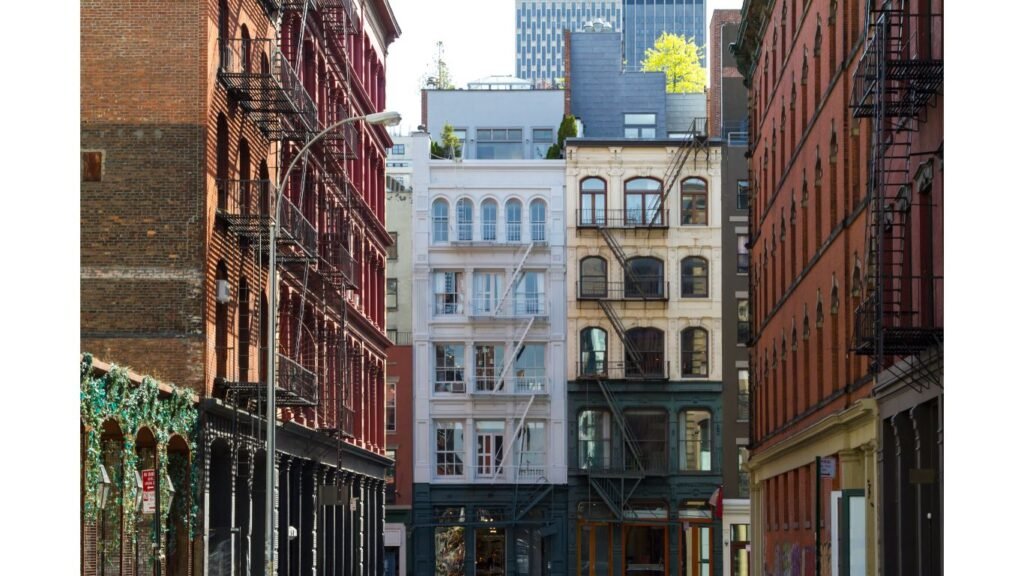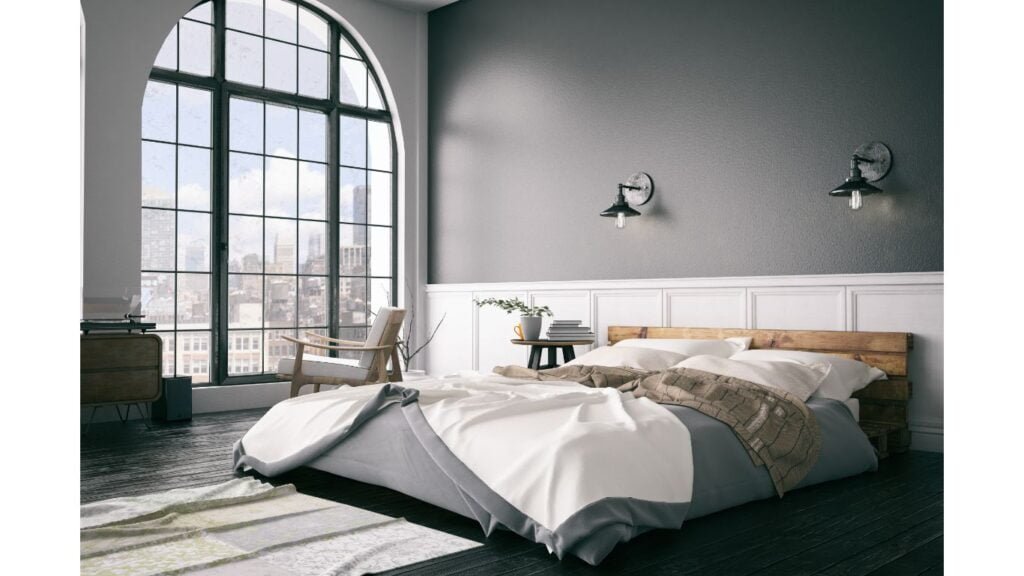An Interior Designer’s Guide to Loft Apartment Living

Many of you who know my work as a New York interior designer, often hear me talk about my renovation and/or design work on brownstone apartments, including full gut renovations of these structures. It’s a growing part of my business, and I must admit, a challenging and very rewarding part to work on! But since there are many types of spaces I help clients design and build out, I want to focus on one in particular that also speaks to my heart – the urban loft apartment. And as a NYC interior designer, I have to say, that no design professional here would be worth their salt if they couldn’t help clients build an amazing lifestyle in these special spaces.
What Is a Loft Apartment?
This kind of apartment is a popular and highly-desired living option – especially in the largest urban areas like here in New York. But what is exactly a loft apartment? Well, traditionally, lofts are large, open spaces, often converted from former industrial buildings or warehouses, and typically feature high ceilings, large windows, and minimal interior walls, which all come together to help create a spacious and airy environment.
The difference between a loft and other types of apartments is that lofts are typically located in non-residential buildings that have been converted for residential use, while traditional apartments are purpose-built for housing.
Lofts are known for their unique blend of residential comfort and industrial charm that typically retain several original architectural elements such as exposed brick walls, wooden beams, and metal pipes, all contributing to a very distinctive aesthetic. In NYC, lofts are particularly popular in Manhattan and Brooklyn, and attract those who appreciate a blend of history, character, and modern urban living.
A Brief History of Loft Apartments
While the buildings might be older (old for the US, but not necessarily for other parts of the world cities like London or Paris), loft apartment living didn’t truly come about until the mid-20th century in New York. During the 60s and 70s, artists began converting abandoned industrial spaces in neighborhoods like SoHo and Tribeca into working studios and living spaces. These areas, once dominated by factories and warehouses, provided affordable, large spaces with ample natural light, perfect for both creating art and living!
Needless to say, the trend grew, and much of the areas transformed into vibrant cultural hubs with the loft lifestyle becoming synonymous with artistic expression and urban chic. As time went on, real estate developers recognized the potential of these spaces, and loft conversions became more mainstream and appealed to a broader audience beyond just the artistic community.
But enough of this history lesson. What I want to dive into are the real plusses (and a couple of the challenges) of living in these types of homes. As an interior designer, I love to work with such “blank” canvases and to help my clients build out beautiful environments to live and even work in.
Key Architectural Features of Loft Apartments
Loft apartments are distinguished by key architectural features that set them apart from traditional living spaces:
- High Ceilings: Lofts often feature ceilings that are 10 to 20 feet high, which enhance the sense of space and openness.
- Large Windows: Expansive windows, at times spanning from floor to ceiling, give abundant natural light and are a significant draw for many residents. (I’m always going on about bringing in natural light – when possible – to improve the look and feel of a space.)
- Open Floor Plans: Lofts typically have minimal interior walls, creating large open living areas that can be customized to suit various needs and preferences. Soft lofts are newer constructions that mimic the old-world industrial charm of hard lofts but offer modern amenities.
- Exposed Elements: Structural and mechanical elements such as brick walls, wooden beams, metal ducts, and pipes are often left exposed, adding to the industrial aesthetic. Hard lofts often feature these traditional industrial elements. (For me this almost has an element of Wabi-Sabi, the Japanese design aesthetic in which elements of “imperfection” are valued. So while pipes and ducts are not exactly “imperfect” components in a home space, they aren’t typically design elements that are emphasized, but rather are usually concealed!)
- Concrete Floors: Concrete floors are a common feature in loft apartments, contributing to their industrial aesthetic.
- Mezzanines and Stairs: Many lofts feature mezzanine levels or stairs, providing additional living or storage space while, again, helping to maintain an open and spacious feel.
It’s this combo of features that come together that make a distinctive (and can I say hip?) living spaces. They are environments that we do love here in New York!
Pros and Cons of Loft Apartment Living
As an interior designer, I want to share some of the specific positives of this type of apartment:
- Space and Flexibility: Open floor plans of lofts allow for creative interior design and flexible use of space (Yay!). Whether you prefer a minimalist studio apartment setup or a more elaborate layout, the possibilities are endless. (OK, maybe not endless, but there are many options!)
- Natural Light: Large windows and high ceilings ensure that loft apartments are filled with natural light, creating a bright and welcoming atmosphere.
- Aesthetic Appeal: The combination of industrial elements and modern design makes lofts visually striking and stylish.
- Urban Location: While the benefits of urban living aren’t exactly due to the apartment space itself, lofts do mostly exist in vibrant urban areas, and with that comes cultural attractions, impressive food scenes, fab people, and great public transportation!
And yes, there are a few cons to the loft apartment option, with the primary ones including:
- Cost: Unique features and desirable locations of lofts can come at a real premium. Loft apartments are expensive compared to traditional apartments due to their size, location, and market conditions. In places like NYC (and particularly Manhattan and Brooklyn), these places can be pricey.
- Privacy: When you have an open floor plan, a lack of privacy can be an issue. It may be that people want greater separation for sleeping, entertaining, cooking, etc. Again, as a New York interior designer, I often work with this type of challenge and find the right solutions with my clients.
- Noise: Large, open spaces with minimal insulation between rooms can make things a bit noisy. (But, hey, NYC is already noisy, right?) There are ways to mitigate this issue.
- Heating and Cooling: High ceilings and large windows can make heating and cooling a loft a bit more challenging, and lead to increased ongoing cost.
So when I work with clients, I make these types of trade-offs clear. Loft living has to be aligned with their lifestyle and preferences. But again, there are ways to work through these issues so that clients can have the homes they love.
Costs Involved in a Loft Conversion
Who isn’t concerned about cost? It’s one of the biggest elements a designer needs to be on top of. Converting an industrial or commercial space into a loft apartment involves multiple expenses that can vary widely depending on the location, the condition of the building (obviously), and the extent of the renovation required.
But the key ones to think about are:
Acquisition Cost
Purchasing the space is the first major expense. In places like New York, it can be significant, particularly in desirable neighborhoods. (Things change fast here though. I am proud to remind you, of the apartment I bought and renovated a few years back in an area that was definitely up-and-coming.)
Renovation
Transforming an industrial space into a comfortable living area can involve extensive renovations, including installing plumbing, electrical, heating and cooling, and all the interior finishes.
Interior Design/Décor
Renovating, furnishing, and decorating a loft to maximize its greatest potential can be costly. Hiring an interior designer specializing in NYC loft apartments (like me 🙂 will make the most of the space, its aesthetic appeal, and the property’s value!
Maintenance
Ongoing maintenance costs should also be considered (I know, booooo), particularly if the building retains original industrial elements that require special care and upkeep over time.
These costs can add up, but for many clients, the result is a one-of-a-kind living space that offers functionality, character, and a sense of legacy.
Living the Loft Apartment Lifestyle
I think a blog piece like this would be incomplete if I didn’t offer up a few thoughts on actually living (the dream) in a loft. This combines urban convenience with an artistic flair. When you have spacious and open floor plans, you have the opportunity to host fabulous gatherings, display your art, and simply enjoy a sense of freedom in the space.
Loft spaces are elevated open areas with low ceilings, commonly used for sleeping and found in apartments, particularly studio and micro apartments.
The design flexibility of loft apartments allows for the personalization of the homes in ways that reflect a client’s tastes and lifestyle choices. Some of these can include not just the basic living areas but even using the space as a home office or a working home art studio.
Studio vs. Loft Apartment Living Differences
OK, I know this might seem a bit whipsaw, but I want to quickly throw into this conversation some of the contrasts between loft apartments compared to the other typical “open space” urban living environments, i.e. the studio apartment. These spaces are known for having:
- Cozy Living Vibe: Perfect for singles or couples, studios offer a compact, intimate living space ideal for those who prefer a minimalistic lifestyle. (And as you know I’m all about minimalism in life. And in New York City, you truly need to make that work so as not to be overwhelmed when living in smaller spaces.)
- Efficient Design: As is typical in more expensive places (like New York), a single multifunctional room needs to blend living, sleeping, and perhaps cooking areas. The best-designed studios maximize every square inch.
- Budget-Friendly: If price is an issue, studios are an excellent choice for the budget-conscious clientele out there.
Loft apartments have that open space (like studios) but also come with:
- More Versatile Layout Possibilities: With large open floor plans, lofts invite creative interior design and customization. They are larger in size compared to studio apartments, offering more flexibility.
- A Spacious Retreat: Boasting generous square footage and soaring ceilings, creates an airy, open atmosphere.
- True Industrial Charm: With distinctive architectural features like exposed beams and brick, lofts exude a unique aesthetic that can appeal to those seeking real character and style in their living environment.
- Premium Living: Something I love to do for my clients is not just design their space, but create a “sanctuary” for them. And with lofts, you get an exclusive sanctuary with extensive room, that is typically set in some of the most prime real estate locations available.
So it’s quite obvious that loft apartment living offers many distinctive and appealing features with a blend of industrial charm and modern convenience. As I mentioned above, while the cost and potential trade-offs are important considerations, the benefits and design flexibility often outweigh them. Whether you’re drawn to the artistic history of Manhattan loft apartments, or the trendy vibe of a Brooklyn loft space (or beyond), loft living gives a special experience to urban life. Knowing all this and getting the right design guidance) can help clients find and create the perfect loft apartment to call home.





